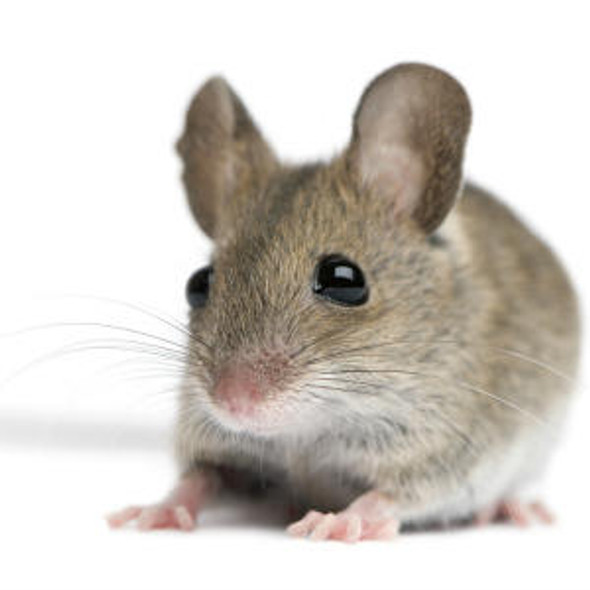Developmental Biology
Anti-OPRL1 Antibody (CAB3113)
- SKU:
- CAB3113
- Product Type:
- Antibody
- Reactivity:
- Human
- Host Species:
- Rabbit
- Isotype:
- IgG
- Research Area:
- Developmental Biology
Description
| Antibody Name: | Anti-OPRL1 Antibody |
| Antibody SKU: | CAB3113 |
| Antibody Size: | 20uL, 50uL, 100uL |
| Application: | WB |
| Reactivity: | Human |
| Host Species: | Rabbit |
| Immunogen: | A synthetic peptide of human OPRL1 |
| Application: | WB |
| Recommended Dilution: | WB 1:500 - 1:2000 |
| Reactivity: | Human |
| Positive Samples: | K-562, SW620, NCI-H460, U-87MG |
| Immunogen: | A synthetic peptide of human OPRL1 |
| Purification Method: | Affinity purification |
| Storage Buffer: | Store at -20'C. Avoid freeze / thaw cycles. Buffer: PBS with 0.02% sodium azide, 50% glycerol, pH7.3. |
| Isotype: | IgG |
| Sequence: | Email for sequence |
| Gene ID: | 4987 |
| Uniprot: | P41146 |
| Cellular Location: | Cell membrane, Cytoplasmic vesicle, Multi-pass membrane protein |
| Calculated MW: | 40kDa |
| Observed MW: | 50kDa |
| Synonyms: | OPRL1, KOR-3, NOCIR, NOP, NOPr, OOR, ORL1 |
| Background: | The protein encoded by this gene is a member of the 7 transmembrane-spanning G protein-coupled receptor family, and functions as a receptor for the endogenous, opioid-related neuropeptide, nociceptin/orphanin FQ. This receptor-ligand system modulates a variety of biological functions and neurobehavior, including stress responses and anxiety behavior, learning and memory, locomotor activity, and inflammatory and immune responses. A promoter region between this gene and the 5'-adjacent RGS19 (regulator of G-protein signaling 19) gene on the opposite strand functions bi-directionally as a core-promoter for both genes, suggesting co-operative transcriptional regulation of these two functionally related genes. Alternatively spliced transcript variants have been described for this gene. A recent study provided evidence for translational readthrough in this gene and expression of an additional C-terminally extended isoform via the use of an alternative in-frame translation termination codon. |
| UniProt Protein Function: | KOR-3: Receptor for the neuropeptide nociceptin/orphanin FQ. Has a potential role in modulating a number of brain functions, including instinctive behaviors and emotions. The activity of this receptor is mediated by G proteins which inhibits adenylyl cyclase. Belongs to the G-protein coupled receptor 1 family. 2 isoforms of the human protein are produced by alternative splicing. |
| UniProt Protein Details: | Protein type:Membrane protein, integral; Receptor, GPCR; Membrane protein, multi-pass; GPCR, family 1 Chromosomal Location of Human Ortholog: 20q13.33 Cellular Component: neuron projection; integral to plasma membrane; cytoplasmic membrane-bound vesicle; plasma membrane Molecular Function:G-protein coupled receptor activity; neuropeptide binding; protein binding; nociceptin/orphanin-FQ receptor activity Biological Process: synaptic transmission; elevation of cytosolic calcium ion concentration; neuropeptide signaling pathway; sensory perception; behavior; G-protein signaling, adenylate cyclase inhibiting pathway; sensory perception of pain |
| NCBI Summary: | The protein encoded by this gene is a member of the 7 transmembrane-spanning G protein-coupled receptor family, and functions as a receptor for the endogenous, opioid-related neuropeptide, nociceptin/orphanin FQ. This receptor-ligand system modulates a variety of biological functions and neurobehavior, including stress responses and anxiety behavior, learning and memory, locomotor activity, and inflammatory and immune responses. A promoter region between this gene and the 5'-adjacent RGS19 (regulator of G-protein signaling 19) gene on the opposite strand functions bi-directionally as a core-promoter for both genes, suggesting co-operative transcriptional regulation of these two functionally related genes. Alternatively spliced transcript variants have been described for this gene. A recent study provided evidence for translational readthrough in this gene, and expression of an additional C-terminally extended isoform via the use of an alternative in-frame translation termination codon. [provided by RefSeq, Dec 2017] |
| UniProt Code: | P41146 |
| NCBI GenInfo Identifier: | 730230 |
| NCBI Gene ID: | 4987 |
| NCBI Accession: | P41146.1 |
| UniProt Related Accession: | P41146 |
| Molecular Weight: | |
| NCBI Full Name: | Nociceptin receptor |
| NCBI Synonym Full Names: | opioid related nociceptin receptor 1 |
| NCBI Official Symbol: | OPRL1 |
| NCBI Official Synonym Symbols: | NOP; OOR; NOPr; ORL1; KOR-3; NOCIR |
| NCBI Protein Information: | nociceptin receptor |
| UniProt Protein Name: | Nociceptin receptor |
| UniProt Synonym Protein Names: | Kappa-type 3 opioid receptor; KOR-3; Orphanin FQ receptor |
| UniProt Gene Name: | OPRL1 |
| UniProt Entry Name: | OPRX_HUMAN |
View AllClose







